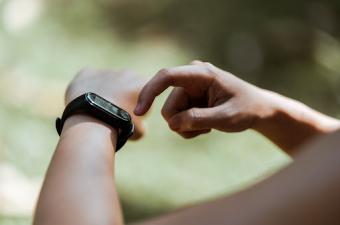Discover the Best HRM For You
HRM stands for heart rate monitor. With so many options for heart rate monitors on the market today, it can be difficult trying to figure out which kind is the best for you. Should you go with a wrist watch monitor or a traditional chest strap monitor? We will give you the pros and cons of both types so that you can make the best choice for your lifestyle.
Wrist Heart Rate Monitor
These monitors use an optical green light to measure your heart rate. They are super convenient to wear, and often double as a watch. Some have a GPS to track your movement, and others include calories burned. All of this is on an easy-to-access digital display on your wrist. Big names for these types of monitors include Apple, Samsung, Fitbit, and Garmin.
Pros:
- Convenient and comfortable to wear
- Easy-to-read display
- Many smart watches already have the feature built in
Cons:
- Moles or freckles can interfere with the accuracy
- Cheaper models are less accurate than more expensive models
- Less accurate in general than chest strap monitors
Chest Strap Heart Rate Monitor
This used to be the only option for heart rate monitoring technology back in the day. These work by using electrodes and recording your heart’s electrical activity. The best brands for these types of monitors are Polar, Garmin, and Wahoo.
Pros:
- Most accurate heart rate monitors on the market
- Very durable material
- Typically more affordable than wrist monitors
Cons:
- Must sync to another device to see your heart rate
- The monitor needs a little moisture to work properly
- Chest strap can slide down or become uncomfortable throughout the workout
Whichever you choose, you’ll know more about your heart rate and be able to more accurately gauge how much effort you are putting into your workout.
